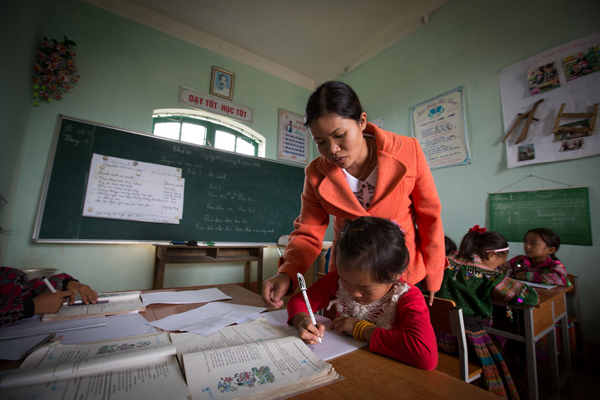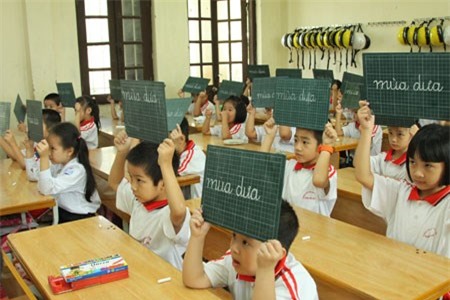The other day I received a letter sent from California by Mr X., colonel in the former Saigon army. He said he was a student of mine more than forty years before, at the beginning of the First Indochina War, when I was teaching at a school which had been moved from Nam Dinh to the countryside.
Mr X. recalled a class in English I gave in a dilapidated parish church one rainy afternoon. The lesson was The Arrow and the Song, a poem by Longfellow which speaks about an arrow and a song that may be found by chance on an oak or in a friendly heart long after the arrow has made its flight in the air.
Another student of the same course, a professor of literature who went to the United States after the liberation of Saigon in 1975, confided to me: “Of all human sentiments, the one that binds a student to his teacher is the most tender, most durable.”
True, this is a tradition in Vietnam. Now, after more than thirty years of war, despite ideological differences, teachers and students from two sides of the barricade are extending their hands to each other in the spirit of national reconciliation.
Confucian ethics which exerts a strong influence on the Vietnamese maintains that “teacher-student relationship” constitutes one of the “three principal social ties” (tam cuong) and that it even transcends “father-son relationship.” A teacher in the old days would command greater respect than a father did because he was one’s spiritual father.

In Vietnam a school instructor, who taught the Chinese characters, was regarded as a country intellectual. He might be a candidate who had failed in one of those triennual literary examinations, or who had passed and had received but a modest title. Or he might be a retired mandarin. The teacher would give classes at his home or at the house of one of his students. He would not take money, his belief being that teaching was something very sacred, but would only accept board and lodging provided by the parents and the care given him and his family by the student body, which was also responsible for his worship after his death. Former students, even those who had become powerful men, would have to keep their heads bowed, in his presence.
It goes without saying that such a teacher would have to be a model of wisdom, erudition and moral uprightness. Typical of this moral rectitude and intellectual probity was Chu Van An in the 14th century who had the rare courage to petition to the king demanding capital punishments to seven fawning mandarins.
The veneration of teachers was maintained even under French colonization, though with less zeal because of the influence of new ideas from the West. One lesson in Quoc van giao khoa thu — Lop dong au (First Grade Reader) says how Lazare Carnot, a man with many military exploits, one day made a surprise visit to his former teacher at the same humbled village school.
The August Revolution of 1945 brought democracy to school. First through forms of address: students were asked to call their teacher “Anh” (Elder Brother) of “Chi” (Elder sister). Later, through the long years of war accompanied by big changes in economy and society, the “teacher-student relationship deteriorated a great deal. Now, efforts are being made for a return to tradition. First, again through forms of address. It is now “Thay” (Master) or “Co” (Mistress) instead of “Anh” or “Chi”. Still, the ideal would be to combine respect and love.



